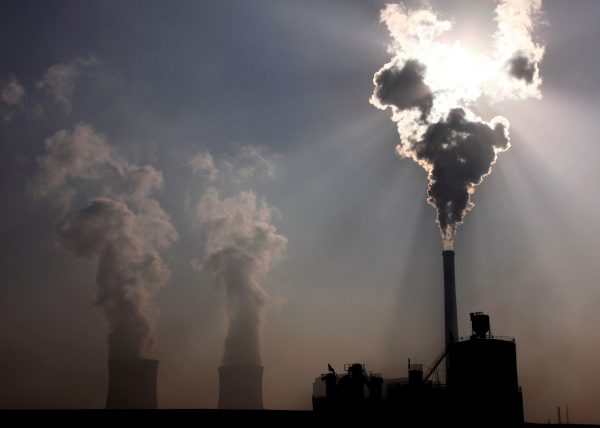Chief among these developments are China’s international commitments to decarbonise the power sector, deep structural changes in China’s coal market and an ambitious program to implement sweeping electricity market reforms.
The previous FYP period (2011–2015) saw a remarkable shift from initial undersupply and the threat of blackouts to significant overcapacity in China’s power market. With this has come a sharp drop in electricity demand growth, leading to a dramatic reduction in coal prices, dragging down global thermal coal markets.
The 13th FYP predicts continued overcapacity and low demand growth rates over the coming five years. This presents a golden opportunity to shake up China’s centrally planned power sector without risking increasing end-user electricity prices.
In March 2015, the government unveiled a plan to introduce generation and retail competition in the power sector. ‘Direct power purchase’ pilots have been rolled out in almost all of China’s provinces since then. The 13th FYP adds extra ambition to these market reform plans, pledging to implement an ancillary services market pilot in China’s northeast, essential to provide the short-term balancing on the grid to integrate renewable energy.
The FYP also promises to establish a uniform system for transparent transmission and distribution tariffs for generators, roll out a national spot market by 2020 that would help build liquidity and short-term responsiveness in the power market, and implement retail choice by 2020.
This plan has powerful implications for the efficiency of energy use and the effectiveness of market-based incentives for emissions reductions such as carbon trading in China.
Similar levels of ambition do not extend to coal power.
The government has set a binding cap of 1100 gigawatts (GW) on total coal generation capacity by 2020, up from 942GW as of late 2016. This will involve retiring 20GW of existing old and inefficient capacity and cancelling or delaying 150GW worth of development approvals over the 13th FYP period.
But that’s unlikely to be enough to reduce overcapacity.
Together these targets imply 4.1 per cent annual growth in China’s installed coal generation capacity out to 2020. This is higher than the plan’s ‘low case’ total electricity demand growth forecast of 3.6 per cent per year, compared to a ‘high case’ forecast of 4.8 per cent in the plan.
Annual utilisation of China’s coal fleet has fallen from rates of 61 per cent between 2001 and 2011 to 47.5 per cent in 2016, the lowest since 1964. Were China to halt construction of new coal fired power plants and raise average utilisation rates back up to 61 per cent, the resulting annual power generation would exceed generation from building new coal power plants under the planned 2020 cap.
Watered down renewable energy targets in the plan also raise concerns.
The previous FYP saw an historic increase in renewable energy capacity in China. Wind and solar photovoltaics (PV) installed capacity increased by an annual average of 34.3 per cent and 168.7 per cent respectively.
But the dark side of this phenomenal growth has been high levels of curtailment, in which power that is being generated cannot be accepted into the grid, despite a legal obligation for grid companies to do so. Major contributors to this have been dispatch decision-making that prioritises coal generation over renewables, sub-optimal siting of renewable energy plants and grid infrastructure upgrades, and overcapacity.
National ambition surrounding new renewable energy capacity additions in the 13th FYP have been significantly reduced, with targeted annual average growth rates of only 9.9 per cent, 21.2 per cent and 2.8 per cent for wind, solar PV and large storage hydropower respectively. These targets will likely be exceeded due to rapidly declining wind turbine and solar module prices and increasing government capital investment. But clearly there is a pressing need to improve the integration of wind and solar into the grid through better siting of projects away from congested parts of the grid, smart electricity market design and scaling up of enabling technologies such as storage, pumped hydropower and flexible gas plants, as well as demand response measures.
Positive stories continue to come out of China for climate action. Non-fossil fuel generators now account for 35 per cent of total generation, China’s coal fired power plants are among the most efficient in the world and economic restructuring away from energy intensive industries is bearing fruit in lower electricity demand growth. China has made international commitments to peak emissions by 2030 and obtain at least 20 per cent of total primary energy supply from zero-carbon sources.
The Chinese government deserves recognition and praise for moving away from inefficient central planning, to the flexibility of a market-based power sector. But the 13th Five Year Plan for Electricity Development also points to a worrying tapering of ambition, particularly in terms of controlling coal overcapacity and bolstering renewable energy.
Olivia Boyd is a researcher at the Crawford School of Public Policy, The Australian National University and an independent consultant working in the renewable energy industry.


As with most ambitious plans for change ‘the devil is in the details’ of whether, let alone how, these get worked out. Given the probable reversal of plans in the USA now that Trump is in office these efforts by the PRC to reduce their use of coal and to increase the use of renewables take on even more significance.